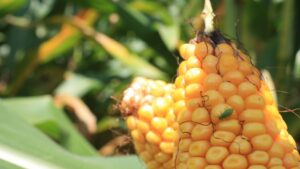Soybeans used to be the easy crop. Corn was king. Soybeans mainly served as a rotation crop when continuous corn wasn’t a good option. This made farmers’ acreage allocation choice easy. It was also easy for seed companies. There were only a couple genetic options and just one herbicide tolerance option. Soybean crop plans basically wrote themselves.
Fast-forward to today, and those “easy” soybean days are long gone. Expanded weed resistance to glyphosate opened the door for more herbicide-resistant traits. Increased exports to China raised commodity prices and made soybeans a true acre competitor to corn. A popular herbicide-resistant trait came off patent and gave farmers a weed control option at an attractive price. Soybean germplasm developers from around the world landed in the United States and expanded genetic options. A plethora of seed treatment options made packaging a lot more complex. Soybeans went from easy to incredibly complicated!
Soybeans are also at the core of geopolitical events. From the trade war to the coronavirus outbreak, soybeans are impacted every time a global event occurs. During the very months that U.S. farmers are trying to make acreage decisions, soybeans were buoyed by the promise of a robust Phase 1 deal with China and the United States-Mexico-Canada Agreement (USMCA) but then plunged as the trade deals lacked teeth and coronavirus fears threatened global markets. How are farmers supposed to know what to plant and how can seed companies plan production with so much uncertainty?
There is no silver-bullet answer, but we can help you navigate a market that seems to change every week.
It’s All About Creating Options
Build a diverse crop plan. There are more variety choices today than ever before. Give your salesforce the best chance at success in 2020-21 by building a supply of as many options as possible. This applies to both traits and genetics. Bring on the latest germplasm but take any 2019 yield data with a grain of salt. The United States isn’t likely to see another growing season like that in 2020!
Also, make sure your infrastructure doesn’t limit your lineup choices. You’ll need all trait options and all genetics options available. Partner with farmers and producers who can do it all. The same goes for maturity. Build a plan that includes options at the Northern and Southern edges of your territory. Soybean acres in the United States are poised to decrease in 2020, so expanding your geographic sales range will help maintain volume. You’ll also need multiple seed treatment choices, so make sure you aren’t limited by your upstream or downstream seed treating partners.
Gro Alliance produces all trait and genetic platforms in a maturity range from 0.0 to 4.7 and applies dozens of seed treatment combinations. The 2020-21 sales year could be a defining moment for the soybean market. We can help you take it on by providing supply flexibility, unlimited seed treatment choice and more!









